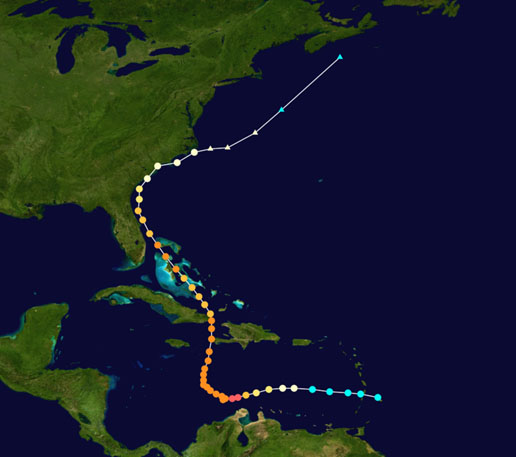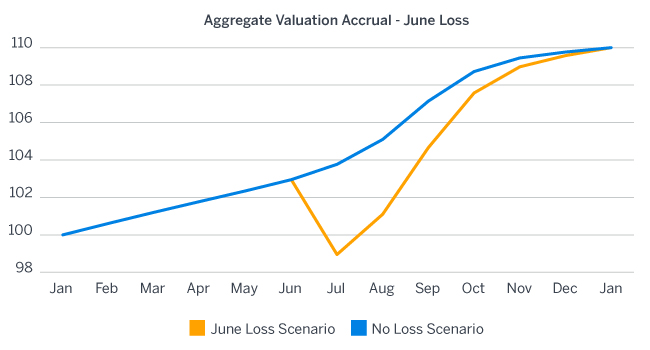Reviewing Hurricane Matthew: Wide-reaching economic impacts, but unlikely to shake the reinsurance and ILS markets
Over the last several days, Hurricane Matthew has brought wind, rain, and often life-threatening flooding conditions to a large portion of the Southeast. Matthew is the most significant windstorm to affect the United States since Sandy in 2012, threatening hundreds of miles of low-lying Atlantic coastline from Florida to North Carolina.
Despite Matthew’s widespread damages, however, the storm may end up being remembered in the U.S. more for the damage it could have caused. Matthew was the longest-lived Category 4 or 5 hurricane in the history of the Eastern Caribbean.1 After making landfall in Haiti as a Category 4 with truly sobering results (killing hundreds and causing the largest humanitarian crisis since the 2010 earthquakes), Matthew passed directly over the Bahamas and threatened a landfall along the Florida coast as a major Category 3 or 4 storm. Instead, a small eastward shift kept Matthew roughly 30 to 50 miles off the Atlantic coastline, keeping the strongest winds (in the northeastern to eastern eyewall) offshore. By the time of Matthew’s official U.S. landfall in South Carolina, it had weakened to Category 1 status.
Figure 1: Matthew historical track as of October 10 (Source: Wiki Commons, based on National Hurricane Center information)

The change in track has also led to downward revisions in estimates of insured loss from the event. While scenarios contemplating a Florida landfall included projections of insurance industry losses up to highs of $20 billion to $30 billion, more recent estimates over the weekend have placed the estimated impact at $4 billion to $6 billion (Corelogic)2 and $7 billion (RMS).3 Significant uncertainty still remains around any Matthew loss estimate, but at this point, it appears clear that Matthew will not reach the previous heights of Katrina (2005, $41 billion), Sandy ($19 billion), or Ike (2008, $12.5 billion).4
Given these developments, it is worth considering what impacts that Matthew may have on the insurance-linked securities (ILS) market and on alternative capital investors more generally. Is Matthew likely to be a major loss event for alternative capital? In addition, will it have much of an impact on U.S. property catastrophe reinsurance rates that have fallen precipitously over the last several years?
ILS market impact: Likely minor, but potential impacts in certain corners
To assess the potential impact to outstanding ILS deals, we can look at past storms that have triggered losses on catastrophe bonds. Based on this history, the potential impacts from Matthew would be expected to be limited: Sandy and Ike did not lead to direct bond defaults (although subsequent catastrophe bonds such as MetroCat Re would have been exposed to a Sandy loss). Most bonds are structured to pay out on events that represent a 1-in-25 year (or less frequent) loss occurrence, and it is unlikely that Matthew will rise to this level. In addition, the predominant damaging factor of Matthew looks to be its floodwaters instead of its winds. Much of residential flood loss is excluded from typical homeowners policies, and is instead either covered by policies written through the National Flood Insurance Program or uninsured entirely.
In a similar fashion, the majority of the industry loss warranty (ILW) market appears to be safe as there are relatively few first-event covers that will pay out for a storm that appears to be well under the $10 billion industry threshold. The coastal track of the storm will provide additional protection to investors as some deals are either Florida-specific or Florida-excluding (and either case would be exposed to far less than the full insured impact of Matthew).
That said, the alternative capital market has not been tested by a significant U.S. storm loss since Sandy, and, in the meantime, has expanded into new products that have increased its exposure to mid-range storms like Matthew. There have been several catastrophe bonds issued over the last couple of years with significantly higher attachment probabilities, down to events at the 1-in-10 year level. Similarly, the expansion of private collateralized reinsurance deals has provided many ILS funds with access to higher yielding (and higher risk) lower layers of reinsurance programs, particularly in the Florida market.
Finally, the alternative capital market has also increased its participations in reinsurance quota shares, sidecars, and even primary partnerships in the Florida market. Each one of these provides investors with additional diversifying exposure to catastrophe risk, increasing the chances of a non-zero exposure to Matthew even as the exposure to a major, right-tail loss event is reduced.
Impacts of Matthew on ILS fund valuation
Based on the impact profile of Matthew, we expect two sets of loss impacts to ILS fund valuations based on the storm:
1. Minor realized losses on collateralized reinsurance per-occurrence layers and sidecars
We might expect a minor to moderate amount of losses on the lowest layers of collateralized reinsurance programs. Key driving factors to consider include the proportion of economic loss that ends up being excluded by residential policies given the flood-heavy nature of the storm; a fund’s exposure to Florida-only writers versus those that are diversified across the Southeast (and thus potentially exposed to a larger proportion of the storm’s impact); and any limits that are written in the Caribbean, which suffered direct landfalls from Matthew across several countries, including Haiti and the Bahamas.
2. Minor writedowns on collateralized reinsurance aggregate layers and aggregate ILS deals
We expect that Matthew’s broader impact might be across the set of deals where Matthew will contribute towards an overall aggregated retention. Even if Matthew is not itself strong enough to trigger a loss to certain catastrophe bonds, ILWs, and collateralized reinsurance contracts with aggregates, we do expect that it will often exceed these contracts’ deductibles (in either standard or franchise form) to accrue a portion of the loss needed to erode the aggregate retention.
In these cases, the erosion of part of the aggregate retention makes the contract more susceptible to suffering loss over the remainder of the contract period (i.e., if future major loss events were to occur). As a result, the valuation of these contracts should see a slight negative impact from Matthew.
Fortunately, Matthew comes relatively late in the hurricane season. Thus—with the exception of multiple-year contracts—there is a correspondingly lower chance of additional U.S. wind events pushing the loss above the aggregate retention. As such, we can expect Matthew’s negative impacts on fair value estimates to be relatively small and to reverse quickly back up to full value assuming that no further events occur this year.
In contrast, if Matthew had occurred earlier in the hurricane season, the relative impact would be greater due to the increased amount of time left in the contract for additional losses to occur. Figure 2 below displays this phenomenon on a theoretical aggregate excess-of-loss contract.
Figure 2: Comparison of theoretical June and October hurricanes on an aggregate contract


As standards relating to the valuation of aggregate contracts vary across the industry to a certain extent, we expect the impact from Matthew to vary by fund. Overall, we might expect slight negative hits to returns in the month of October, followed by slightly above-expectation returns in November and December, assuming that there are no significant follow-up events.
Impacts of Matthew on future pricing
Even though the impacts of Matthew are likely to pale in comparison to past events such as Katrina or Sandy, it is nonetheless the most significant windstorm loss for the Southeast since Ike in 2008. Might it lead to increased property catastrophe reinsurance rates or rising yields on catastrophe bonds as the 2017 renewal season approaches?
Indications are that impacts are likely to be muted if any are seen at all. Early reports from analysts and rating agencies indicate that Matthew will be a profit-impacting event instead of a capital-impacting event, and the largely offshore track might mean that few entities are driven to a yearly loss.
In the existing rate environment, rates are widely accepted to be at or near the lowest feasible return levels, and multiple ILS funds attest to having extra capital ready to enter the market at the first sign of post-event price strengthening. As such, we generally expect that Hurricane Matthew will not lead to significant price strengthening in 2017 with potential exceptions for any working-layer collateralized reinsurance contracts for regional carriers that may suffer direct loss from the event.
1As per Dr. Phil Klotzbach of Colorado State University, October 9, 2016
2 CoreLogic, “Media Advisory: CoreLogic Analysis Shows Between $4 Billion and $6 Billion in Insured Property Loss from Hurricane Matthew.” http://www.corelogic.com/about-us/news/media-advisory-corelogic-analysis-shows-insured-property-loss-from-hurricane-matthew.aspx
3Trading Risk, “Modelled RMS loss estimates fall dramatically,” http://www.trading-risk.com/modelled-rms-loss-estimates-fall-dramatically(subscription required)
4Insurance Information Institute, Top 10 Most Costly Catastrophes, United States. http://www.iii.org/issue-update/catastrophes-insurance-issues
About the Author(s)
Reviewing Hurricane Matthew: Wide-reaching economic impacts, but unlikely to shake the reinsurance and ILS markets
It is worth considering what impacts Hurricane Matthew may have on the insurance-linked securities market and on alternative capital investors more generally.